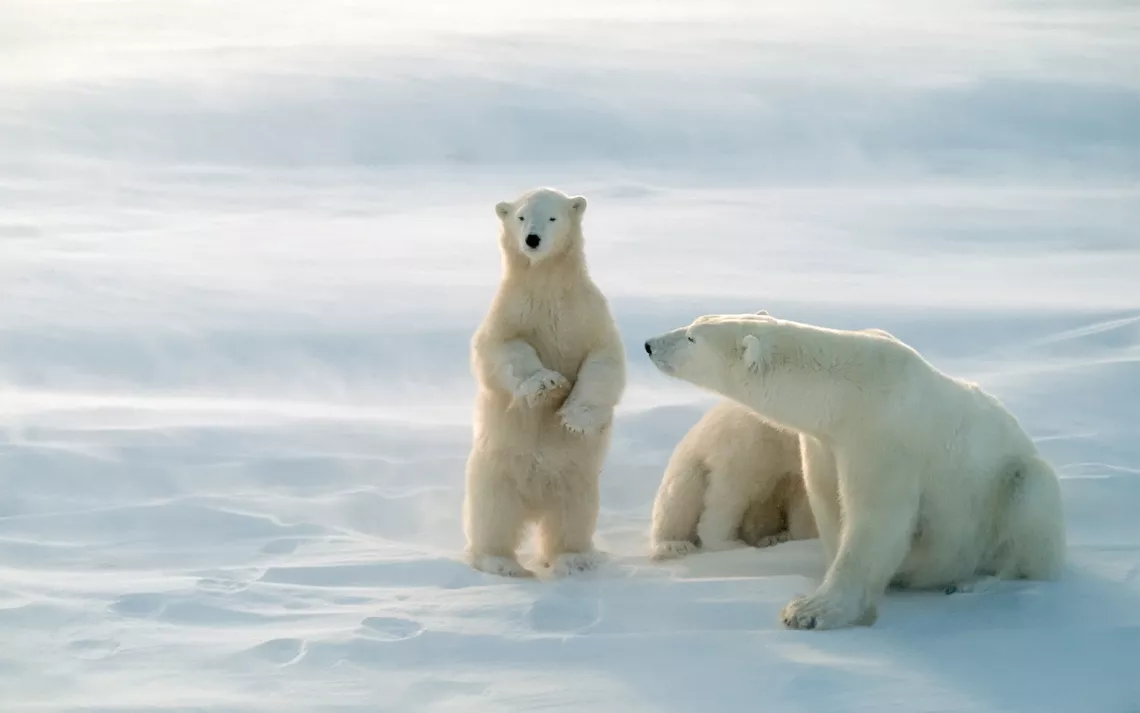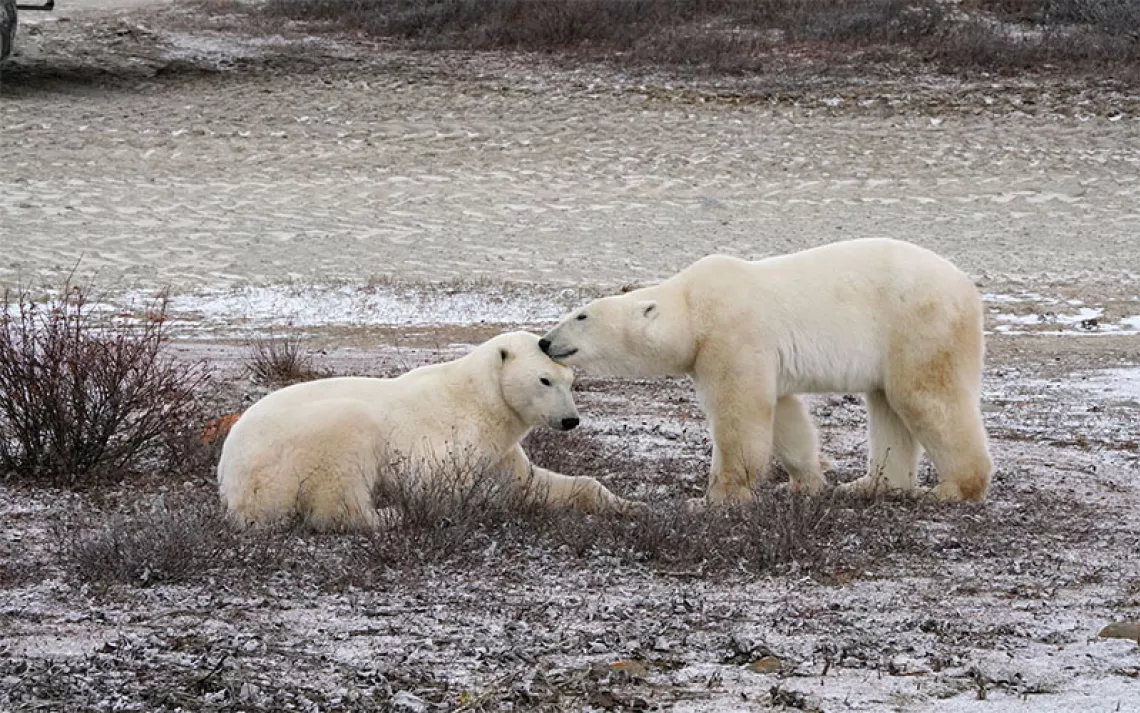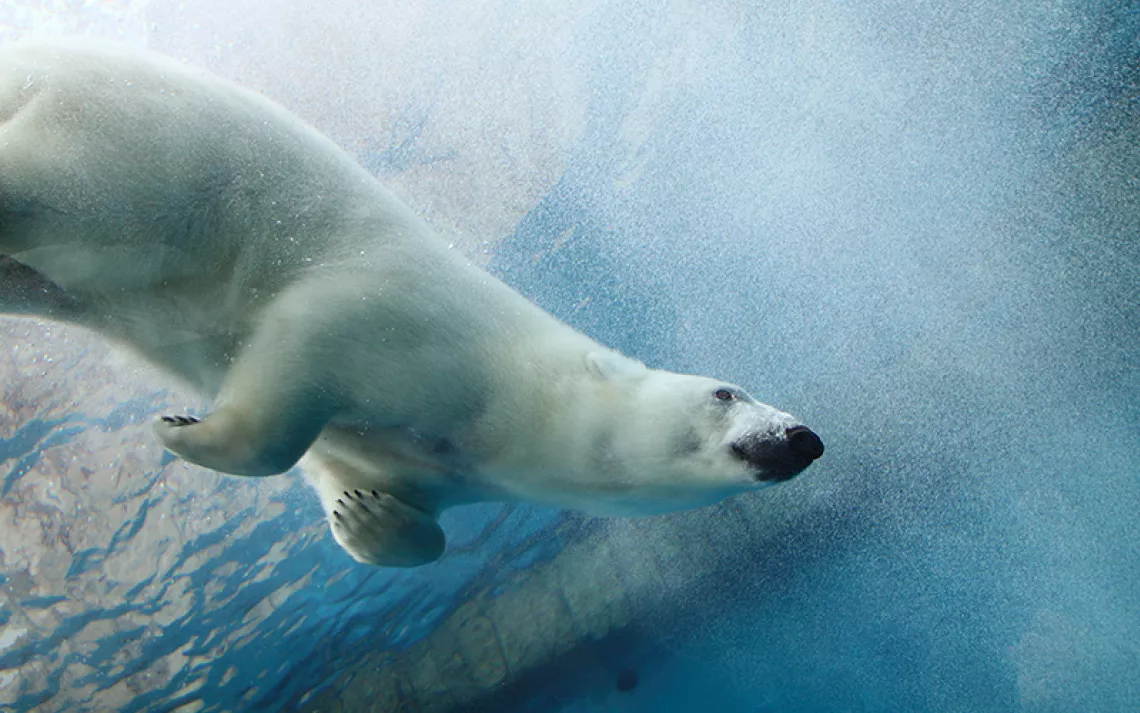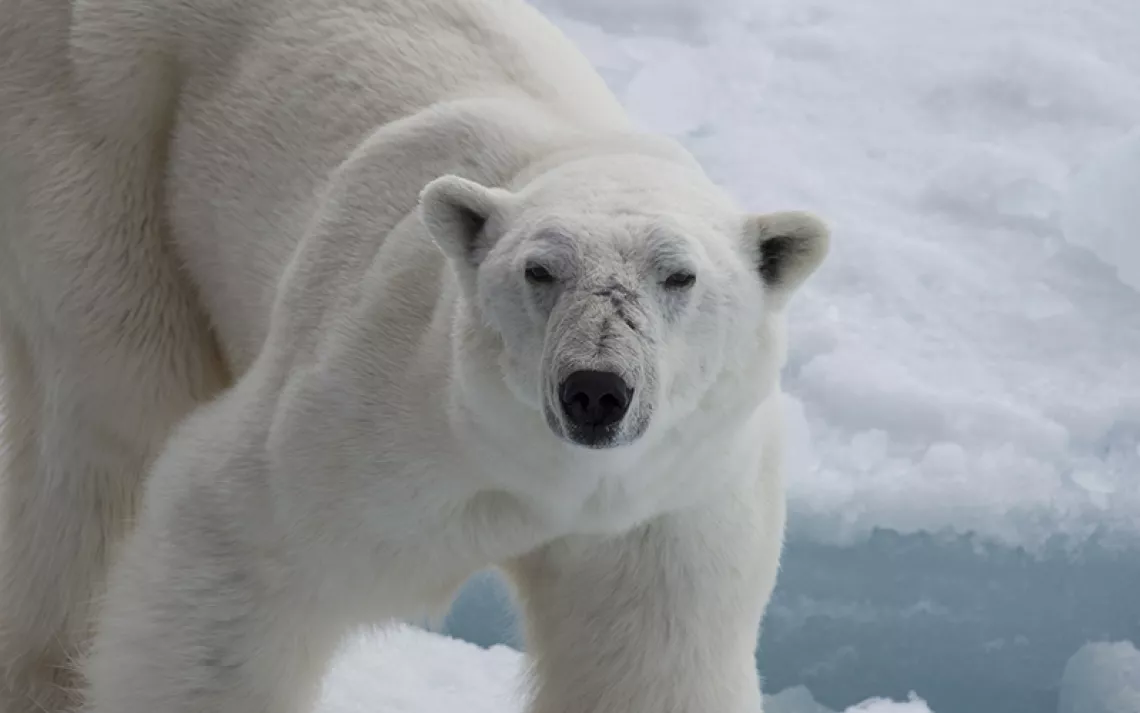Saving the Fuzzy Face of Climate Change
Can the polar bear's fame protect it?

Polar bears in Canadian Arctic
|iStock/JohnPitcher
The finalized Fifth Assessment Report by the Intergovernmental Panel on Climate Change (IPCC) was released earlier this week, prompting the New Yorker to take a fascinating look at the commercial fate of the iconic, beleaguered polar bear. What happens to the fuzzy face of Coca-Cola if Arctic sea ice melts in our lifetimes?
The corporate stakes are high, if not as high as those of the bear: At the soda maker’s Atlanta headquarters, “each year, a million people pay as much as sixteen dollars a ticket to meet Coke’s ‘most beloved character,’ a fluffy suit of synthetic white fur with a human inside, pulling strings to form a saccharine, glass-eyed grin,” writes Mya Frazier. Coke’s use of the polar bear began in 1922, with familiar versions of more recent vintage. “Coke’s animated bears appeared fifteen years before the animal received protection, in 2008, as a threatened species in the United States under the Endangered Species Act,” Frazier writes. “The timing coincided with rising awareness that Arctic sea ice is melting, which has led polar bears to become the ‘poster species of climate change,’ in the words of a 2013 study. According to the [IPCC], in fifty to seventy years, polar bears won’t be able to live and hunt on most of the sea ice they can access today.”
Whether the polar bear’s family-room status will help it as it stares down potential extinction is up to question. On the one hand, says Barbara Phillips, a professor of marketing at the University of Saskatchewan who studies brand characters, goofy animated versions of wildlife may not translate to serious issues. “The further the character gets away from being a real character in the world,” Phillips told the New Yorker's Frazier, “the less a company needs to worry about what happens in the real world.” But, Phillips adds, “The Coke bear is facing a unique cultural situation. The cultural meaning of the animal is changing. Polar bears aren’t just cute white bears who drink Coke. There’s this overlap between the advertising world and the real world. When people think of polar bears, they are thinking of a drowning polar bear—and that is not a happy polar bear.”
For its part, Coca-Cola “pledged some two million dollars to the World Wildlife Fund, delivered across five years starting in 2011, and it has supplemented that money by soliciting three million dollars in direct donations from consumers.” It’s a drop in the bucket for a company worth $80 billion, but it surpasses efforts by other companies, such as (Tony the Tiger) Kellogg’s to help dwindling tiger populations and Lacoste to save rare crocodiles.
 The Magazine of The Sierra Club
The Magazine of The Sierra Club



